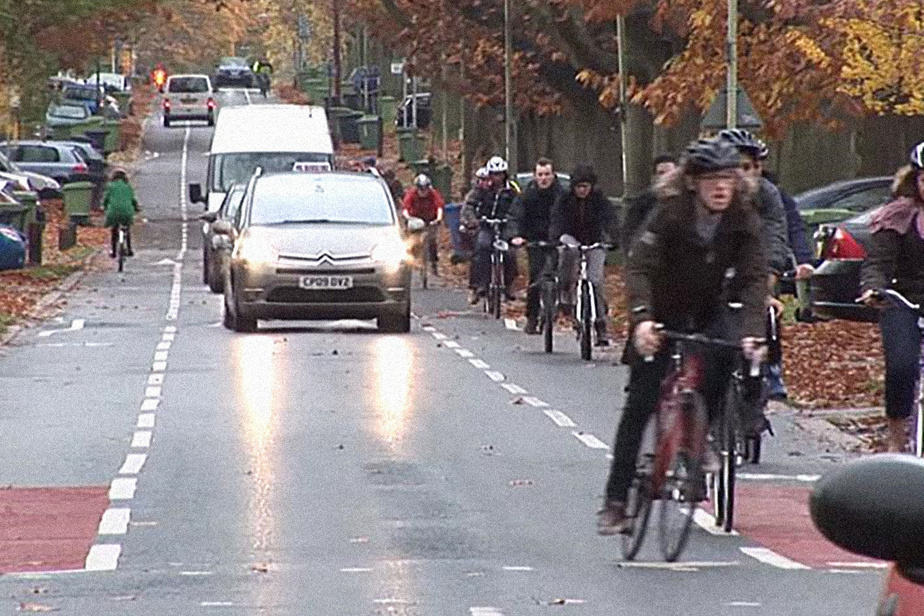What is going on ?
The first Quebec “chaucidou”, a development aimed at calming traffic, could see the light of day in Bromont, in Estrie, this summer. This “pilot project relating to traffic on public roads composed of a two-way central lane roadway” will come into force at the end of the month, indicates the decree signed by the Minister of Transport and Sustainable Mobility, Geneviève Guilbault. This pilot project “is consistent with the government’s desire to see innovative solutions rapidly multiply across Quebec to facilitate the responsible development of mobility,” Minister Guilbault’s office indicated in writing.
What is a chaucidou?

IMAGE TAKEN FROM THE CITY OF BROMONT FACEBOOK PAGE
Many municipalities already have a “chaucidou”, particularly in France and the United States.
It is a contraction of the expression “gentle traffic roadway”. Other terms, including unmarked central lane and optional cycle lanes, are also used. The Quebec ministerial decree speaks of a “bidirectional central lane”. ” The principle […] is quite simple and logical: there is a single central lane for cars, two others on the sides for bicycles,” summarizes the municipality of Bromont in its documentation. “When two cars pass each other, they can move into the bicycle lane. If there is already a bicycle on the lane, it has priority over the car. »
Watch the video from the City of Bromont
Why did Quebec block the project last summer?
Even if it is a municipal road, the Ministry of Transport “must be involved in all pilot projects aimed at testing new devices. It is under his responsibility, according to the Road Safety Code,” explained the spokesperson for the Ministry of Transport for Estrie, Isabelle Dorais, last August. To authorize new traffic rules, a “ministerial decree is required which must be published prior to implementation”. The Ministry having “jurisdiction in all matters relating to the road safety code”, this also includes signage.

IMAGE PROVIDED BY THE CITY OF BROMONT
The development will be carried out on a portion of Chemin Lotbinière, in Bromont.
What is the purpose of this chaucidou?
The development carried out on a portion of Chemin Lotbinière, where the speed must be reduced from 70 km/h to 50 km/h, “will have the objective of slowing down traffic and sharing the road between the different users”, a summarized the municipality. Bromont, which had budgeted around $20,000 for the project, surrounded itself with various experts, including researchers from the University of Sherbrooke and Polytechnique Montréal. A lot of data must also be transmitted to the Ministry, in particular on speed readings, vehicle throughput, issues, incidents, complaints and comments.
Is it dangerous?
Many municipalities already have a chaucidou, particularly in France and the United States. The City of Ottawa also judged its “optional bicycle lanes” pilot project to be successful in 2019. “The evaluation […] clearly indicated the benefits of these lanes for bicycle safety, including that motorists move further away from cyclists when passing them, and that cyclists stay further away from parked cars,” the Ontario municipality told us. by email. “We will closely monitor the findings [du projet de Bromont] to better understand whether this solution meets our road safety objectives,” indicated Minister Guilbault’s office.
